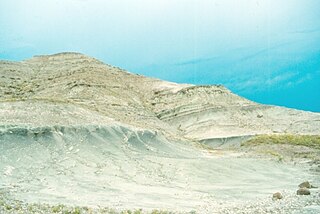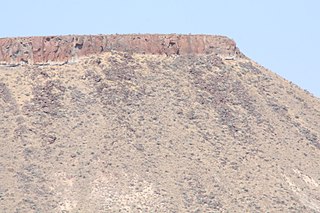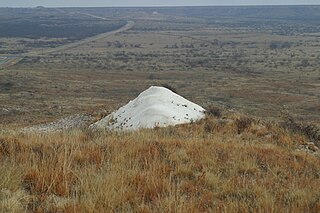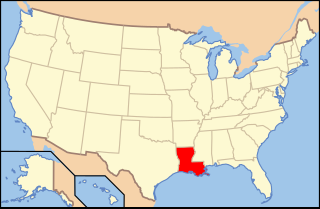
The order Peramelemorphia includes the bandicoots and bilbies. All members of the order are endemic to Australia-New Guinea and most have the characteristic bandicoot shape: a plump, arch-backed body with a long, delicately tapering snout, very large upright ears, relatively long, thin legs, and a thin tail. Their size varies from about 140 grams up to 4 kilograms, but most species are about one kilogram.

Dromornis is a genus of large to enormous prehistoric birds native to Australia during the Oligocene to Pliocene epochs. The species were flightless, possessing greatly reduced wing structures but with large legs, similar to the modern ostrich or emu. They were likely to have been predominantly, if not exclusively, herbivorous browsers. The male of the largest species, Dromornis stirtoni, is a contender for the tallest and heaviest bird, and possibly exhibited aggressive territorial behaviour. They belong to the family Dromornithidae, extinct flightless birds known as mihirungs.

Perameles is a genus of marsupials of the order Peramelemorphia. They are referred to as long-nosed bandicoots or barred bandicoots.

The Two Medicine Formation is a geological formation, or rock body, in northwestern Montana and southern Alberta that was deposited between 82.4 Ma and 74.4 Ma, during Campanian time. It crops out to the east of the Rocky Mountain Overthrust Belt, and the western portion of this formation is folded and faulted while the eastern part, which thins out into the Sweetgrass Arch, is mostly undeformed plains. Below the formation are the nearshore deposits of the Virgelle Sandstone, and above it is the marine Bearpaw Shale. Throughout the Campanian, the Two Medicine Formation was deposited between the western shoreline of the Late Cretaceous Interior Seaway and the eastward advancing margin of the Cordilleran Overthrust Belt. The Two Medicine Formation is mostly sandstone, deposited by rivers and deltas.

Quinkana is an extinct genus of mekosuchine crocodylians that lived in Australia from about 25 million to about 10,000 years ago, with the majority of fossils having been found in Queensland. Four species are currently recognized, all of which have been named between 1981 and 1997. The two best understood species are Q. fortirostrum, the type species, and Q. timara, a more gracile form from the Miocene. The other two species, Q. babarra and Q. meboldi, from the Pliocene and Oligocene respectively, are only known from a few poorly preserved bone fragments. The name Quinkana comes from the "Quinkans", a legendary folk spirit from Gugu-Yalanji mythology.

Palorchestes is an extinct genus of large terrestrial, herbivorous Australian marsupial of the family Palorchestidae, living from the Miocene through to the Late Pleistocene. Like other palorchestids, it had highly retracted nasal region suggesting that it had a prehensile lip, as well as highly unusual clawed forelimbs that were used to grasp vegetation.

Paludirex is an extinct genus of mekosuchine crocodylian from the Pliocene and Pleistocene of Australia. A large and robust semi-aquatic ambush hunter capable of attaining lengths of up to 5 m (16 ft), it was likely the top predator of Australia's waterways prior to the appearance of modern saltwater crocodiles. Two species are known, the smaller Paludirex gracilis and the larger Paludirex vincenti. A third as of yet unnamed species may have also existed.

The Rattlesnake Formation is a Miocene to late Pliocene geologic formation found along the John Day River Valley of Oregon, in the Western United States.

Elseya is a genus of large side-necked turtles, commonly known as Australian snapping turtles, in the family Chelidae. Species in the genus Elseya are found in river systems in northern and northeastern Australia and throughout the river systems of New Guinea. They are identified by the presence of alveolar ridges on the triturating surfaces of the mouth and the presence of a complex bridge strut.
The Bluff Downs giant python is an extinct species of snake from Queensland, Australia, that lived during the Early Pliocene. Named in 2002, Liasis dubudingala was likely the biggest snake found in Australia, with a total length of up to 9 m (30 ft). This length rivals the largest extant snake species, the reticulated python from Asia and the green anaconda from South America. It may have fed on larger prey such as juvenile diprotodontids, but it is also possible that it was a skilled climber capable of catching birds and arboreal marsupials.

Mount Blanco is a small white hill — an erosional remnant — located on the eastern border of the Llano Estacado within Blanco Canyon in Crosby County, Texas. With Blanco Canyon, it is the type locality of the early Pleistocene Blanco Formation of Texas and Kansas, as well as the Blancan fauna, which occurs throughout North America. Mount Blanco is a Late Blancan age site, and is associated with other Late Blancan sites from Texas such as Red Light and Hudspeth local faunas from Hudspeth County, and the Cita Canyon fauna from Randall County.
Perameles allinghamensis, the Bluff Downs bandicoot, is a small extinct bandicoot that lived in Australia 4 million years ago in the Pliocene period. It was discovered at the Bluff Downs fossil site in northern Queensland. Its diet probably consisted of insects and soft roots dug for with its front claws.
Elseya nadibajagu is a Pliocene species of extinct Australian snapping turtle, described from the Bluff Downs region of Queensland, Australia.

Paleontology in Louisiana refers to paleontological research occurring within or conducted by people from the U.S. state of Louisiana. Outcrops of fossil-bearing sediments and sedimentary rocks within Louisiana are quite rare. In part, this is because Louisiana’s semi-humid climate results in the rapid weathering and erosion of any exposures and the growth of thick vegetation that conceal any fossil-bearing strata. In addition, Holocene alluvial sediments left behind by rivers like the Mississippi, Red, and Ouachita, as well as marsh deposits, cover about 55% of Louisiana and deeply bury local fossiliferous strata.

The Ringold Formation is a geologic formation in Eastern Washington, United States. The formation consists of sediment laid down by the Columbia River following the flood basalt eruptions of the Columbia River Basalt Group, and reaches up to 1,000 feet (300 m) thick in places. It preserves fossils dating back to the Neogene period.

Kanapoi is a paleontological site in the Kenyan Rift Valley, to the southwest of Lake Turkana. Fossils were first found at Kanapoi in the 1960s by a Harvard expedition, and later by expeditions from the National Museums of Kenya.
Tubul Formation is an Early Pleistocene sedimentary formation located in Arauco Province in south–central Chile. Its sediments were deposited in marine conditions. It overlies unconformably the folded sedimentary formations of Ranquil (Miocene–Pliocene), Quiriquina and the Lebu Group (Paleocene-Eocene).
Hipposideros winsburyorum is a hipposiderid species of bat known by fossil specimens, one of the many new taxa of chiropterans discovered in the Riversleigh World Heritage Area. The species existed during the Pliocene.
Macropus pan is a species of marsupial that existed during the Pliocene in Australia, known only from fossils located at several sites across Australia. The species is recognised as allied to the modern grey kangaroos, the western Macropus fuliginosus and eastern Macropus giganteus, in a clade initially named as subgenus Macropus (Macropus) Dawson & Flannery. The first description was provided by Charles W. De Vis in 1895, emerging from the author's examination of fossil material held at the Queensland Museum. Fossil specimens of Quanbun local fauna, named for a site in Western Australia, were also identified as this species. The origin of the type specimen was not recorded, although based on comparisons to material with a known provenance it is assumed to have excavated at Chinchilla, Queensland. A larger macropod than any modern species, the standing height was estimated to be over two metres.

Koobor is an extinct genus of extinct phascolarctid marsupials. The genus contains two species: Koobor jimbarratti and Koobor notabillis.


















